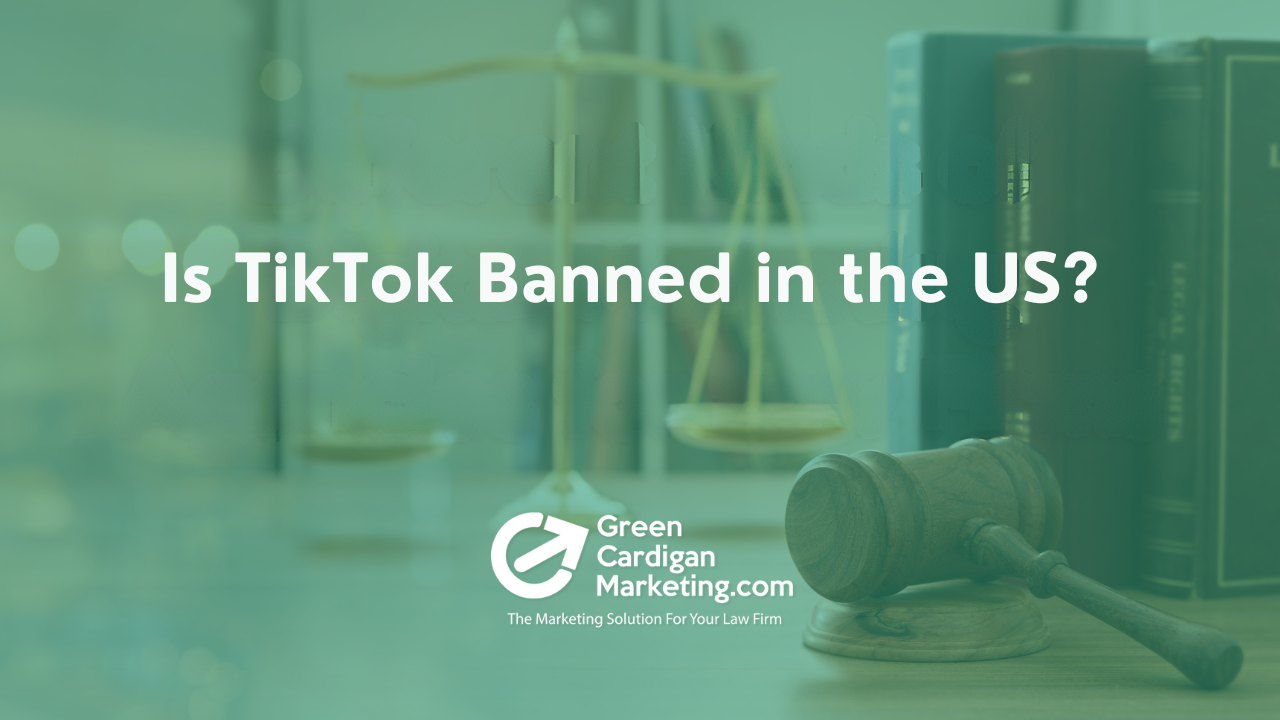Is your law firm growing at a snail’s pace? Speed things up with the right marketing tools
Your law firm’s website, social media profiles, and overall online presence are the backbone of your law firm’s growth growth. Law firms, like any other industry, are not immune to the transformative power of effective online marketing. In fact, the legal field can reap immense benefits from a well-thought-out digital marketing strategy. Did you know that law firms that embrace online marketing strategies experience growth rates up to 25% faster than those that rely solely on traditional methods?
Step 1: Identify Your Target Audience
Understanding your ideal client is the foundational step in effective marketing. Your target audience is not just a demographic; it’s a persona with unique needs, preferences, and pain points. You need to clearly define these to craft directly targeted messaging.
Identifying your ideal client, that’s to say; your client avatar, then check out our free downloadable resource.
Step 2: Identify Your ‘Why?’
“Why should someone hire you?”
It’s a question that transcends the realm of legal jargon and gets to the heart of your practice. Building a powerful ‘Why’ statement is key to setting your firm apart. This is known as your mission statement.
Instead of simply reminding people that you’re a lawyer, establish your ‘Why.’
You’re more than just a lawyer. Don’t just simply remind a potential client that you have experience.
Your ‘Why’ is there to convince them of your values and purpose. Think about it. Why should someone entrust you with their legal matters?
Creating a compelling mission statement is essential. It defines your purpose and communicates your firm’s values to both clients and employees.
Steps for Creating a Mission Statement
- Understand Your Core Values:
Begin by identifying the core values that your law firm stands for. What principles and beliefs guide your firm’s decisions and actions?
- Define Your Purpose:
Determine the primary purpose of your law firm. Why does your firm exist, and what do you aim to achieve for your clients and the community?
- Know Your Target Audience:
This is where it ties back to Step#1. Consider your target clients’ needs and expectations. A mission statement should resonate with your target audience and address their legal concerns.
- Gather Input:
Involve key stakeholders, partners, and employees in the mission statement creation process. Different perspectives can provide valuable insights.
- Keep It Concise:
A mission statement should be clear and concise. Aim for a statement that is no longer than a few sentences.
- Be Inspirational:
Inspire your team and clients with aspirational language. A great mission statement should motivate and rally people around a common purpose.
- Reflect Your Uniqueness:
Highlight what sets your law firm apart from others. Your mission statement should emphasize your unique strengths and values.
- Stay Future-Oriented:
Craft a mission statement that reflects your long-term vision and goals. Avoid using language that limits your firm’s potential.
- Test It:
Share your mission statement with colleagues, clients, and trusted advisors to gather feedback. Ensure it resonates with your target audience.
- Revise and Refine:
Don’t be afraid to revise and refine your mission statement over time. As your firm evolves, your mission may need updating.
Tips for a Strong Mission Statement
- Be Specific: Use clear and specific language to convey your firm’s purpose and values. Avoid vague or generic statements.
- Focus on Impact: Highlight the positive impact your firm has on clients’ lives, the legal system, or the community.
- Avoid Legalese: Keep the language in your mission statement accessible and jargon-free. It should be easily understood by clients and the public.
- Emphasize Ethics: If ethical principles are integral to your firm’s values, consider incorporating them into your mission statement.
- Keep It Timeless: Aim for a mission statement that remains relevant over time. Avoid trendy language or references that may become outdated.
- Align with Actions: Ensure that your firm’s actions and behaviors align with your mission statement. Consistency is key to credibility.
- Seek Professional Help: Struggling to define your mission statement is ok. If you aren’t sure of how to craft a mission statement, consider consulting someone with market expertise.
- Be Authentic: Your mission statement should reflect your firm’s genuine values and goals. Authenticity builds trust with clients and employees.
- Stay Adaptable: While a mission statement provides a guiding framework, be open to adapting it as your firm’s focus or values evolve.
- Showcase Commitment: If your firm is committed to pro bono work, community service, or specific causes, consider including these commitments in your mission statement.
3 Questions to Help You Craft the Perfect Marketing Message
Crafting an effective marketing message that resonates with your ‘why’ and speaks to your target audience is a game-changer for your law firm’s growth.
When done right, your marketing message becomes crystal clear, and effortlessly draws in your ideal client avatar. It’s the statement that tells potential clients why you’re the answer to their legal needs.
But in can be difficult to condense all of the above steps and tips into one statement. How can you be sure your marketing message hits the mark? It all boils down to three essential questions, and we’ll delve into them in this video.
Remember that a well-crafted mission statement serves as a powerful tool for guiding your firm’s actions, attracting clients who share your values, and inspiring your team to work towards a common purpose.
Step 3: Build a Quality, SEO-Focused Website that Google Loves!
When it comes to establishing a strong online presence for your law firm, your website is the cornerstone of your digital marketing strategy. To ensure your website ranks well on search engines like Google and attracts quality traffic, it’s crucial to focus on Search Engine Optimization (SEO). Let’s delve into the key elements of creating an SEO-focused website. This will help you reach the organic search results that will build your firm up.
1. On-Page SEO and Off-Page SEO
On-Page SEO refers to the optimization of individual web pages to improve their search engine rankings. This involves optimizing content, HTML source code, and metadata. Key on-page SEO elements include keyword optimization, high-quality content creation, and user-friendly web design.
Off-Page SEO involves activities outside your website to boost its search engine rankings. Off-page SEO primarily focuses on building high-quality backlinks, which are links from other authoritative websites pointing to your site. It also involves social media marketing and online reputation management.
2. Why Is On-Page SEO Important?
On-page SEO is essential because it directly impacts how search engines understand and rank your content. By optimizing your web pages for relevant keywords and providing valuable, well-structured content, you improve your chances of ranking higher in search results. This, in turn, drives organic traffic to your website, increasing your visibility among potential clients.
3. The Importance of Backlinking
Backlinks are a critical aspect of off-page SEO. Search engines view high-quality backlinks as a vote of confidence in your website’s credibility and authority. When reputable websites link to your content, it signals to search engines that your site offers valuable information. Building a diverse portfolio of quality backlinks can significantly boost your site’s search engine rankings.
4. Optimizing Site Speed
Site speed is a crucial factor in SEO and user experience. A slow-loading website can result in higher bounce rates (percentage of site visitors that leave a webpage without taking any actions) and lower rankings. To optimize site speed:
- Compress images and videos to reduce file sizes.
- Use a content delivery network (CDN) to distribute content efficiently.
- Minimize HTTP requests by reducing the number of elements on each page.
- Enable browser caching to store frequently accessed resources locally.
- Keep mobile devices in mind. Mobile use probably accounts for 50% or more of your website visitors.
5. Maintaining Website Health
Regularly maintaining your website ensures it continues to perform well in search results. Key aspects of website health include:
- Content Updates: Keep your content fresh and relevant. Regularly update blog posts, practice area pages, and any other content (More on this in the next section).
- Technical Audits: Periodically conduct technical SEO audits to identify and fix issues like broken links, duplicate content, and crawl errors.
- Mobile Responsiveness: Ensure your website is mobile-friendly, as Google prioritizes mobile-first indexing.
- Security: Protect your site from cyber threats by implementing robust security measures, such as SSL certificates.
By focusing on both on-page and off-page SEO, optimizing site speed, and maintaining your website’s health, you can create an SEO-focused website that not only ranks well but also provides a positive user experience.
Learn More about SEO for Law Firms
Step 4: Invest in Consistent SEO
The Power of Content Creation for SEO
In the dynamic landscape of online marketing for law firms, one strategy stands out as a cornerstone for success—content creation. Regularly publishing high-quality, relevant content on your website can significantly boost your SEO efforts and, consequently, your visibility to potential clients.
The Importance of Consistency
Search engines, particularly Google, favor websites that consistently provide fresh and valuable content. Regular updates signal to search engines that your website is active, relevant, and worthy of higher rankings.
Consistency also keeps your audience engaged and coming back for more. Establishing a posting schedule and sticking to it can help build trust and loyalty.
Quality Over Quantity
While consistency is crucial, quality should always be your top priority. Google’s algorithms are increasingly sophisticated and prioritize content that genuinely benefits users.
People want to hear what you have to say. Be a thought leader. Share your work experiences (without divulging any sensitive information, of course), your thoughts on new or old legislation, and your approach to relevant or difficult cases to showcase your expertise.
Focus on creating in-depth, informative, and well-researched content that answers your audience’s questions and addresses their pain points.
Keyword Research
Before you start creating content, conduct thorough keyword research to identify the specific search terms your target audience uses. Tools like Google Keyword Planner and SEMrush can help you find relevant keywords.
Incorporate these target keywords naturally into your content, including in the title, headers, and body. However, avoid keyword stuffing (placing too many keywords on one page), which can harm your SEO efforts.
Diversify Content Types
Diversify the type of content on your site to cater to different preferences. Consider creating blog posts, case studies, legal guides, videos, infographics, and podcasts.
Different formats can appeal to various segments of your audience and provide opportunities for content repurposing.
Address User Intent
Understand the intent behind your audience’s search queries. Are they looking for information, seeking legal advice, or comparing law firms? Tailor your content to match their intent.
Provide practical solutions and actionable insights in your content. Demonstrating your expertise and willingness to help build trust.
Long-Form Content
Long-form content, such as comprehensive guides or whitepapers, often performs well in search results. It allows you to cover topics in depth and position your firm as a thought leader.
Break down complex legal concepts into easily digestible sections, ensuring readability and engagement.
Engage Your Audience
Encourage user engagement by enabling comments, social sharing, and subscription options. Engaged users are more likely to stay on your site longer, signaling its value to search engines.
Respond to comments and engage with your audience to foster a sense of community.
Regular Audits and Updates
Periodically review and update your existing content to ensure accuracy and relevance. Outdated information can harm your SEO rankings.
Consider repurposing successful content into new formats or expanding on popular topics.
Track and Analyze
Utilize analytics tools like Google Analytics and Google Search Console to monitor the performance of your content. Track key metrics like organic traffic, click-through rates, and conversions.
Analyze user behavior to identify which content resonates most with your audience and adjust your content strategy accordingly.
Remember that SEO is an ongoing effort, and your commitment to providing valuable content will continue to pay dividends over time.
Step 5: An Optimized Google Business Profile
Your Google Business Profile is often the first interaction potential clients have with your firm. Prioritizing online reviews and keeping your profile consistently updated can significantly impact your online reputation and visibility.
Google Business Profile is valuable digital real estate, here’s everything you need to know.
Step 6: Target Local Prospects with Google Local Service Ads
Google Local Service Ads can put your law firm front and center when local prospects are searching for legal services. We’ll walk you through the process of creating and optimizing these ads to ensure they reach the right audience.
Harnessing the Power of Google Local Service Ads
In your quest to enhance your law firm’s online visibility, Google Local Service Ads can be a game-changer. These ads are specifically designed to connect local service providers, like law firms, with potential clients in their vicinity.
What is a Google Local Service Ad?
A Google Local Service Ad is a paid advertising feature that appears at the very top of Google search results, above traditional paid ads and organic listings. These ads are designed to help local businesses like law firms reach nearby customers actively searching for legal services.
When a user submits a relevant search query, Google may display your Local Service Ad if it deems your firm a suitable match based on location, services offered, and other factors. The distinguishing feature of these ads is that they require firms to go through a rigorous screening process to ensure their legitimacy and reliability.
How Much Do Google Local Service Ads Cost?
Google Local Service Ads operate on a pay-per-lead model rather than the traditional pay-per-click model. You only pay when a potential client contacts you directly through the ad, such as by calling your law firm or sending a message.
The cost per lead can vary significantly based on factors like your practice area, location, and competition. Google provides tools to set a weekly budget, allowing you to control your spending.
Google Screened and Google Guaranteed: What’s the Difference?
Google offers two badge programs that enhance the credibility and trustworthiness of your Local Service Ad:
- Google Screened: This badge signifies that your firm has passed background checks for business and legal professional records. It’s available to a broader range of law firms and professionals.
- Google Guaranteed: This badge requires additional background checks and offers a money-back guarantee for customers, adding an extra layer of trust. While Google Guaranteed is more exclusive, it can instill greater confidence in potential clients.
How to Set Up Google Local Services Ads
- Create or Claim Your Business Profile: If you haven’t already, create a Google My Business profile for your law firm. This profile serves as the foundation for your Local Service Ad.
- Verify Your Business: Ensure your business information is accurate and up to date on Google My Business. Google will send a verification code to your business address.
- Set Up Local Service Ads: Access the Local Service Ads platform through your Google Ads account. Follow the prompts to create your ad, including selecting your practice areas, service areas, and budget.
- Complete the Screening Process: If you aim for the Google Screened or Google Guaranteed badge, be prepared to undergo background checks and provide relevant documentation. This step is essential to boost your ad’s credibility.
- Ad Launch and Monitoring: Once approved, your Local Service Ad will go live. Monitor its performance closely through Google Ads and make adjustments as needed to maximize its effectiveness.
By embracing Google Local Service Ads, you can position your law firm at the forefront of local search results, reach a highly targeted audience seeking legal services in your area, and build trust through Google’s verification badges. When implemented strategically, these ads can be a cost-effective way to grow your client base and solidify your online presence in your local legal community.
Your Online Presence is Non-Negotiable
In a world where competition is fierce, and online presence is non-negotiable, these tools, tips, and tricks are your arsenal for accelerating your law firm’s marketing and growth. By identifying your ideal client, crafting a compelling ‘Why,’ optimizing your website and SEO, harnessing the power of online reviews, and targeting local prospects effectively, you’ll position your firm for success in the digital age.
If you want to take your law firm’s marketing to the next level but don’t have the time or manpower to do it, you can count on us. At Green Cardigan Marketing, helping law firms grow and excel in their online marketing (i.e. get more leads and make more money) is what we do. Contact us today to discuss how we can tailor these strategies to your specific needs and start your journey toward accelerated growth.










